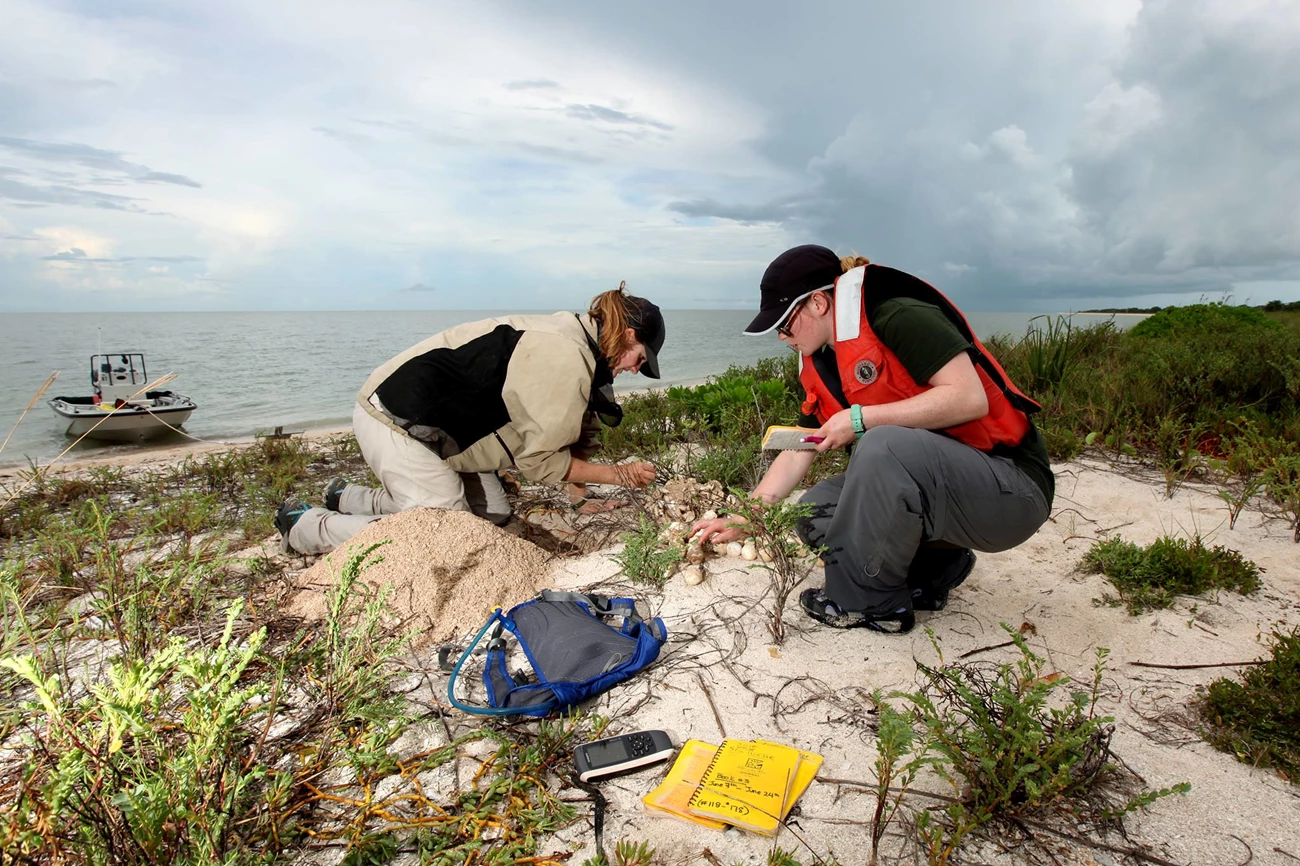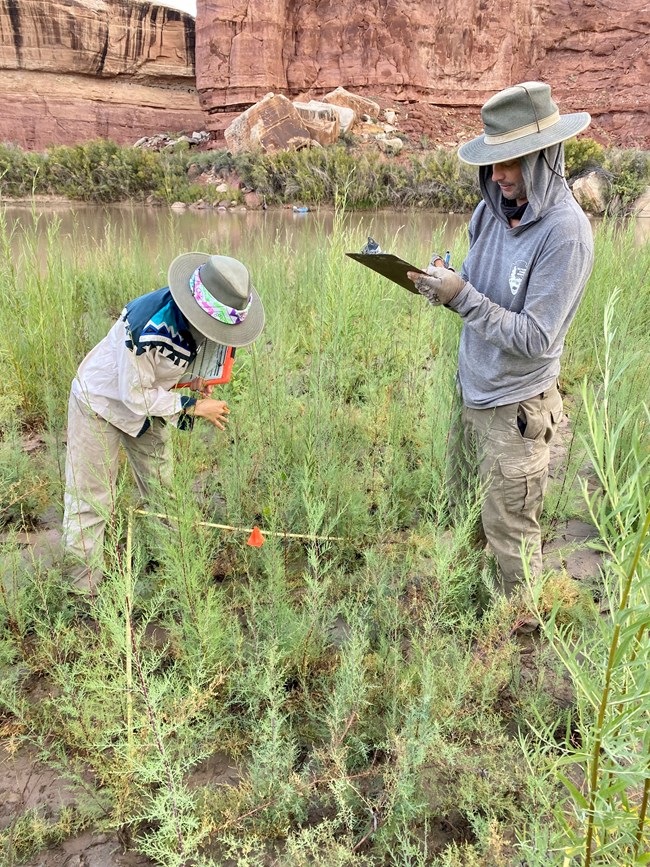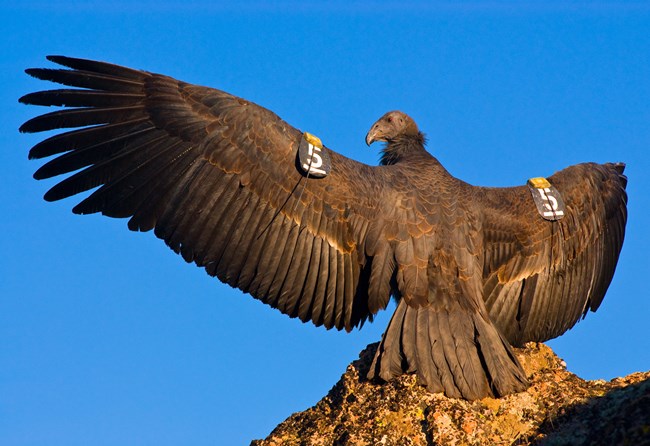Purpose
The National Park Service (NPS) welcomes and encourages your interest in conducting research in the national park system. This guide has been prepared for those who may be considering scientific activities in NPS wilderness areas. The information is intended to help you prepare research proposals through an understanding of the National Wilderness Preservation System, how wilderness is managed, and how research proposals will be evaluated.

NPS
The National Wilderness Preservation System
The purpose of the Wilderness Act of 1964 is “…to secure for the American people of present and future generations the benefits of an enduring resource of wilderness…” The system today is a network of more than 800 congressionally designated wilderness areas administered by the NPS, Bureau of Land Management, US Fish and Wildlife Service, and US Forest Service. From Alaska to Puerto Rico, wilderness protects some of the most valued places in our country. Fifty national park units have designated wilderness totaling more than 44 million acres. An additional 26 million acres of NPS lands are eligible for wilderness designation and are managed as wilderness by policy. Many wilderness parks include a description of the wilderness on the national park’s webpage under the “Learn About the Park” tab.
How wilderness is administered
The Wilderness Act directs administering agencies to preserve wilderness character and to leave areas unimpaired for their future use and enjoyment as wilderness. Except as otherwise provided for by law, wilderness areas are devoted to the public purposes of recreational, scenic, scientific, educational, conservation, and historical use.
Wilderness character is a holistic concept based on the interaction of biophysical environments primarily free from modern human manipulation and impact, personal experiences in natural environments relatively free from the encumbrances and signs of modern society, and symbolic meanings of humility, restraint, and interdependence that inspire human connection with nature. Together, these tangible and intangible values distinguish wilderness from other lands. Five tangible qualities contribute to wilderness character:
- Untrammeled—Wilderness is free from intentional modern human control, constraint, and manipulation.
- Natural—Ecological systems in wilderness are largely unaffected by modern civilization.
- Undeveloped—Wilderness is essentially without permanent improvements or modern human occupation.
- Solitude or primitive and unconfined recreation—Wilderness provides outstanding opportunities for solitude or primitive and unconfined recreation.
- Other features of value—Wilderness may include tangible, site-specific features of ecological, geological, or other features of scientific, educational, scenic, or historical value.
Section 4(c) of the Wilderness Act identifies uses that are generally prohibited except as necessary to meet minimum requirements for the administration of the area for the purpose of the Act. These “4(c) uses” are:
- Temporary roads
- Use of motor vehicles, motorboats, or motorized equipment (includes power tools)
- Landing of aircraft (includes aerial delivery or pickup of cargo)
- Other forms of mechanical transport (includes wheelbarrows and carts)
- Structures or installations (includes unattended sensors, cameras, tags, and markers)

NPS
How proposals for scientific activities in wilderness are evaluated
Approval for scientific research, monitoring, or collecting in national parks (in both wilderness and non-wilderness areas) generally requires an application for a Scientific Research and Collecting Permit and submission of a study plan or proposal that describes the nature, purpose, and value of the project. Some types of research may have different permitting requirements.
Studies that propose any “4(c) use” or that have the potential to impact wilderness character are evaluated by the NPS in a "minimum requirements analysis.” Information in the study plan or proposal will be used in the analysis, which determines:
- Whether action is necessary to meet minimum requirements for the administration of the area.
- What methods, techniques, activities, and tools will have the minimum impact on wilderness and still meet the study’s objectives. Convenience and efficiency are given significantly less weight than other considerations in this analysis, and if a compromise of wilderness resources or character is unavoidable, only those actions that preserve wilderness character and/or have localized, short-term adverse impacts will be acceptable.
In preparing a study proposal, researchers should describe the potential outcomes and benefits of the proposed scientific activities, including:
- What is the breadth of scientific inquiry? Would it increase understanding of one component of the environment or many interrelated aspects? Would it evaluate new ideas or refine previous research?
- Would the results address a stewardship issue in the national park? How important and urgent is the issue? Would the results be applicable immediately or address future situations? How would results be applied?
- How broad are the potential benefits? Would the results benefit the national park, the region, the nation, or the world? Would benefits be short- or long-term?
A proposal should also thoroughly describe proposed methods. Consider providing maps with features of research interest and the proposed locations of study sites, as well as photos of equipment or installations. Address the following as they apply to the proposed activity:
- Location: Why must this research occur in wilderness? What non-wilderness locations were considered? Are all components of the research wilderness-dependent, or can some activities be conducted in non-wilderness?
- Field work: How will you address the access and logistical challenges of working in a wilderness area? What training and equipment will workers be provided? If you intend to camp overnight, how many people will camp, for how long, and in what locations? Will the work require an exception to wilderness travel and camping rules?
- Transportation: Does research require mechanical transport or the landing of aircraft? If so, what types and routes of travel? Why is this the minimum necessary? What transportation alternatives were considered, and how would methods that don’t use mechanical transport or aircraft landings change how you address research questions?
- Markers, tags, or collars: Will research require unattended markers, tags, or collars? How will this information be used? Where will they be placed? How many sites or individuals will be marked or collared and why is this the minimum number? What is the least amount of time markers, tags, or collars are necessary? How will you ensure they are removed? What alternatives were considered for locating study sites or tracking individuals, and how would methods that don’t use markers, tags, or collars change how you address research questions?
- Measuring devices: Are you proposing to install unattended instrumentation, such as cameras, temperature recorders, weather stations, or stream gauges? Why are these instruments needed? How would they be installed? How would instrumentation be maintained or serviced, and how often? What is the minimum number of instruments and the minimum time needed to deploy them? What design features and other measures would be taken to minimize visual, audible, and maintenance impacts of the instruments? How would you ensure instrumentation is removed? What other alternatives were considered, and how would methods that don’t use unattended instruments change how you address research questions?
- Motorized equipment: Are you proposing to use motorized equipment on your project? When? Where? How long? What non-motorized methods were considered, and how would methods that don’t use motorized equipment change how you address research questions?

NPS/Gavin Emmons
Summary
The NPS encourages and supports appropriate research in wilderness and uses science to enhance national park management. Even those scientific activities that involve a potential impact to wilderness resources or values may be allowed when the benefits of what can be learned outweigh the impacts on wilderness resources or values.
The best opportunities for maximizing the benefits and minimizing the impacts of scientific activities occur when national park managers and scientists collaborate in advance. Scientists can support the review process and increase the likelihood of timely approval by contacting national parks at the earliest stages of project planning, and by providing detailed study plans that integrate wilderness considerations into the research permit application.
Last updated: June 26, 2025
